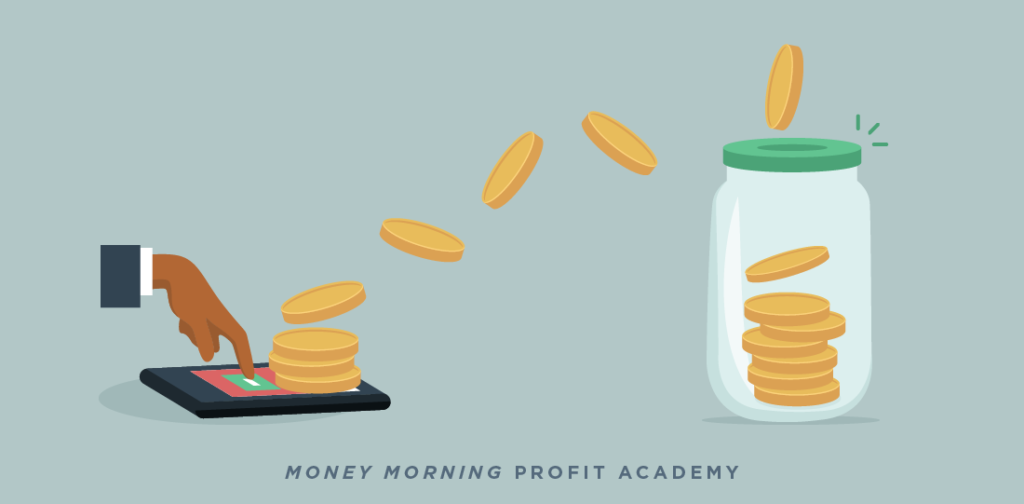
Now that you know how the stock market functions, it’s time to put that knowledge to work.
And to do that, you’ll need to fund an investing or retirement account.
It might seem daunting when you look at the alphabet soup of account options, but it’s one of the most important parts of the investing process.
This lesson will help you navigate the various account types and develop a plan to consistently fund your account. Making sure you’re continuously putting money into your account is almost as important as what you do with it once it’s there.
Let’s cover some of the most common types of investing accounts to help you get started.
The Difference Between Active and Passive Investing
Earlier in the Profit Academy, we covered active vs. passive investing, which is an important distinction to make when considering types of investing accounts.
To recap: Passive investing is simply matching the market’s returns by owning low-cost ETFs and mutual funds. There are typically lower fees with passive investing, which may be attractive to someone who isn’t ready to work with a portfolio manager.
On the flip side, active investing is typically more hands-on and benefits from the help of a portfolio manager who has experience monitoring the stock market. Rather than just going with the flow of the market, active investing tries to outperform the market or stock index, which can yield high returns, but also may have more risks associated with it.
When deciding between active and passive investing, consider how much time you want to devote to managing your portfolio and your risk tolerance.
What Are the Different Types of Investing Accounts?
When you’re ready to open an investment account, you have several options to choose from. Plus, depending on whether you open an active or passive investment account, you can choose when you access the money you put away, who else has access, and how much you save.
Think about your financial goals and how you plan to use and access the money over time. Then, consider the following types of investing accounts.
1. Taxable Brokerage Accounts
Taxable brokerage accounts, sometimes called traditional broker accounts, are considered active investing accounts. These account types are for non-retirement use and allow for great flexibility in terms of accessing your money.
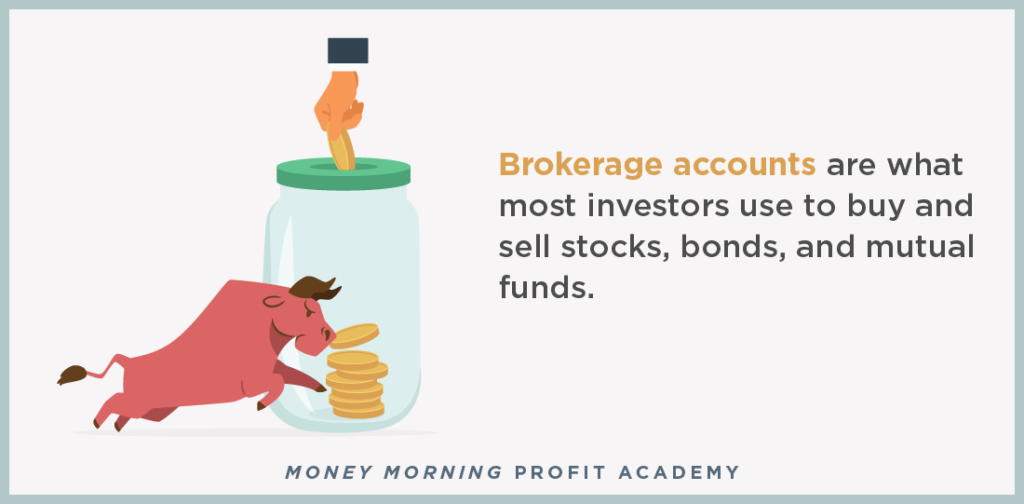
Taxable brokerage accounts can be used for stocks, ETFs, mutual funds, and more. Any gains that come from your investments (both purchases and trades) are taxed with this type of account during the year that you receive the money.
Additionally, you have two options for setting up the ownership for a traditional broker account:
- Individual taxable brokerage account: One individual holds ownership of the account. This individual is also responsible for any taxes associated with the account.
- Joint taxable brokerage account: Two or more people hold ownership of the account. While spouses typically fall under this category, non-related individuals can hold ownership of a joint account.
The Pros and Cons of Brokerage Accounts
While brokerage accounts are taxed, many investors sing their praises for their extensive flexibility. Depending on how you envision yourself using your investment money, there are advantages and disadvantages to this type of account.
Taxable brokerage accounts include benefits such as:
- There are no limits to how much money you can deposit into an account
- There are no restrictions on when you can access the money
- You can withdraw funds to be used for any reason
Notable cons to this type of investment account include:
- Funds are taxed (typically at your ordinary income tax rate) when you earn them
- Funds are taxed when you make a withdrawal
Want to learn more about this type of investment account? In the next lesson, we walk you through how to set up a brokerage account, step by step.
IRA Retirement Plans
Unlike traditional brokerage accounts, individual retirement accounts (IRAs) are focused on just that – retirement. Anyone can have an IRA so long as you’ve made the appropriate contributions.
An IRA is a non-taxable investing account that holds your funds for all the same types of investments such as stocks, bonds, ETFs, and more. There are several types of IRA accounts to choose from, and each has its own usage terms.
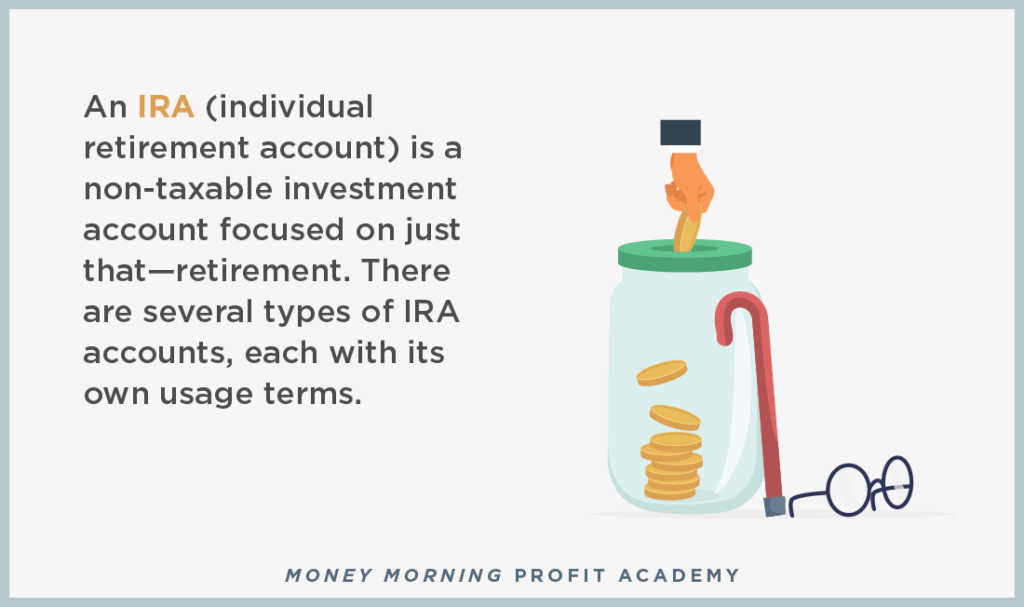
In general, you are limited by how much you can contribute and when you can withdraw your money. Additionally, you may be taxed at the time your contributions are made or the day you withdraw your money, depending on the type you choose.
Traditional IRAs
With a traditional IRA, you contribute pre-taxed income often over several years. Unique to this specific type of IRA, your contributions are tax-differed until you choose to withdraw your money. You’ll be taxed on your contributions at the time of withdrawal.
Additionally, the IRS has rules about when you can access your money. You must wait until you’re 59 ½ years old before you dip into your savings. Otherwise, you may be subject to penalties – usually a 10% early withdrawal tax.
Roth IRAs
Roth IRAs are quite similar to traditional IRAs except for a few key details. Most notably, your contributions with a Roth IRA are not tax-deductible, meaning you won’t be taxed when you choose to withdraw your funds.
Additionally, you can withdraw your contributions at any time without having to worry about a penalty from the IRS. And as long as you’re 59 ½ and have been on the plan for at least five years, you can make tax-free withdrawals.
SIMPLE and SEP IRAs
Small business owners or sole proprietors may consider a SIMPLE or SEP IRA. These accounts can be set up for a small-business owner’s employees and hold many of the same tax advantages as other IRAs.
SIMPLE and SEP IRAs are similar with their main differences lying in contribution limits. An individual holding a SIMPLE IRA can contribute up to $13,000 per year or $16,000 for account holders who are 50 or older. With an SEP IRA, account holders can contribute 25% of their income, up to $56,000.
3. Employer-Sponsored Plans
Many employers offer some sort of investment plan for employees. With a company-wide plan, the employer selects and sponsors the plan while tax-deductible contributions are made by employees. The funds are typically deducted from your payroll, and sometimes, your employer may match your contributions by a certain percentage.
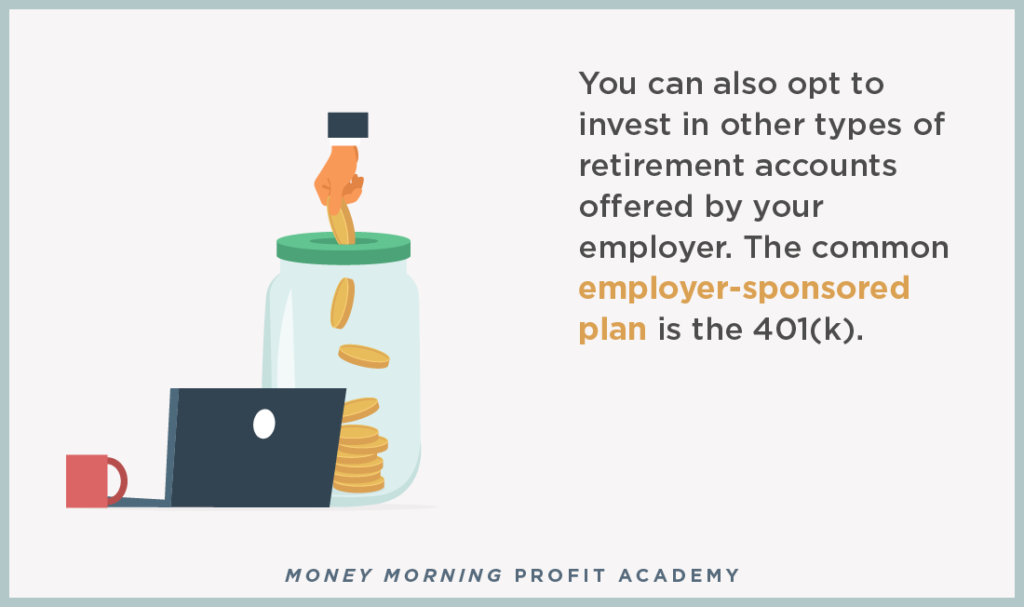
401(k) Plans
The most common employer-sponsored plan is the 401(k). This plan is extremely advantageous to employees and can result in a nice retirement nest egg when you’re ready to exit the workforce.
With a 401(k) you can decide how much of your paycheck you’d like to contribute each pay cycle and simply watch your money grow over time. As mentioned before, your employer may also match your contributions, adding to your growing retirement fund.
While there are no set rules for how much you should contribute, aim to contribute as much as you comfortably can, and increase your contributions over time if possible.
Other Retirement Plan Types
While 401(k) plans are one of the most common employer-sponsored types of investing accounts, there are other options to consider as well.
Most employer options operate similarly with you contributing directly from your paycheck and your employer offering some sort of matching contribution. While you can typically access these funds at any time, there are penalties to accessing them early, before the age of 59 ½.
Other retirement plan types include:
- 403(b)
- 457
- Thrift Savings Plan (TSP)
4. Education Accounts
The fourth type of investing account to consider is an education account. Similar to the way IRAs can be used specifically for retirement, education accounts can only be used for education-related purposes.
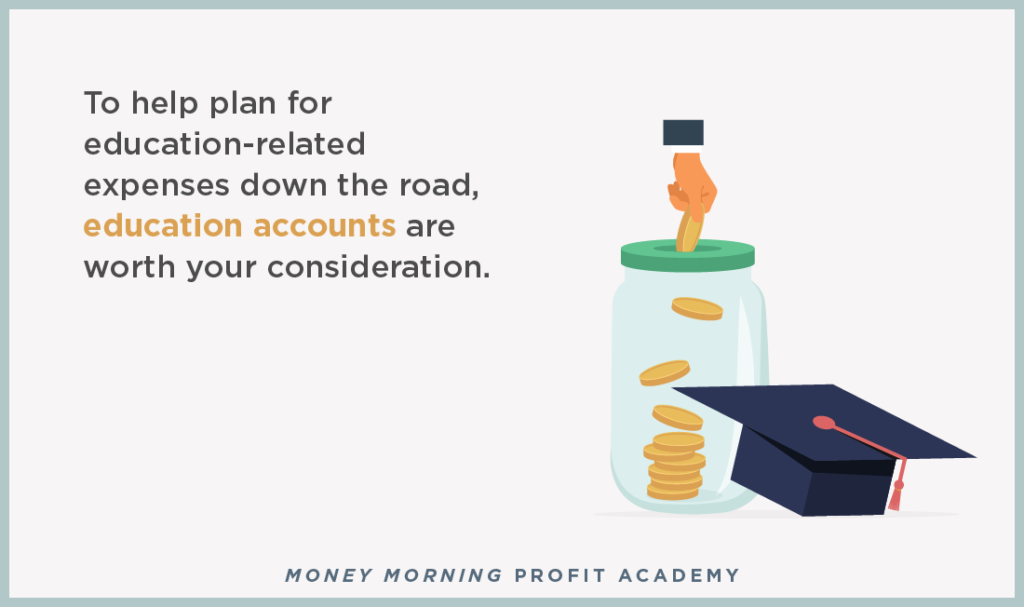
Anyone can contribute to these plans, but the sole beneficiary can only use the funds for higher education purposes such as attending college. And, depending on where you live, your state may also match contributions.
529 Plans
A 529 plan is one of the most common types of education accounts. Set up by either someone else or the beneficiary, the account’s contributions can be used for either college expenses or
K-12 education expenses.
For college, most states offer its own plan, but you can also contact a brokerage to open a plan yourself. Once you’re ready to use the funds, you can pay for your education no matter where you attend school in the U.S.
Coverdell Education Savings Account (ESA)
A Coverdell Education Savings Account operates similar to a 529 plan with one exception. Unlike a 529 plan, Coverdell Education Savings Accounts must be opened before the beneficiary turns 18.
Otherwise, the funds can be used for the same purposes – whether for college education or grades K-12.
Adding Money to Your Investment Accounts
Getting money into your accounts is nearly as important as what you do with it once it’s there. And with the number of possible accounts to fund it might be tricky figuring out where to put your money. The last thing you want to do is to neglect to fund an account because you weren’t sure which one was right for you.
With an explanation of different types of investing accounts along with the advantages of active or passive investing, you’ll be well on your way to financial freedom for your golden years.
And if you’ve decided to open an active investing account such as a taxable brokerage account, we have more tips and pointers to guide you along the way. A brokerage account can grow your investment egg significantly over time, you just need to know how to set one up. Visit our next lesson to get started.


